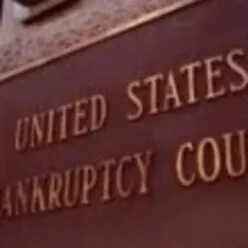Filing for bankruptcy can be a difficult decision, but it is sometimes necessary to help you get back on your feet financially. Before you file for bankruptcy, it is important to understand the pre-filing requirements and steps you must take.
Table of Contents
Introduction
Knowing what documents you need to prepare and what steps you need to take can help you navigate the bankruptcy process and ensure that you are taking the right steps to protect your financial future. This article will provide you with an overview of the pre-filing requirements and steps you need to take before filing for bankruptcy.
FAQ
Question 1: What is Bankruptcy?
Answer: Bankruptcy is a legal process that allows individuals and businesses to eliminate or repay some or all of their debts under the protection of the federal bankruptcy court.
Question 2: What are the different types of Bankruptcy?
Answer: There are several types of bankruptcy available to individuals and businesses, including Chapter 7, Chapter 11, and Chapter 13. Each type of bankruptcy has its own requirements and benefits.
Question 3: What are the requirements for filing Bankruptcy?
Answer: The requirements for filing bankruptcy vary depending on the type of bankruptcy you are filing. Generally, you must be able to demonstrate that you are unable to pay your debts and that you have no other viable options.
Question 4: What documents do I need to file Bankruptcy?
Answer: You will need to provide the court with a variety of documents, including a list of your creditors, a list of your assets and liabilities, and proof of your income and expenses.
Question 5: What steps do I need to take before filing Bankruptcy?
Answer: Before filing bankruptcy, you should consult with a qualified bankruptcy attorney to determine if bankruptcy is the right option for you. You should also gather all of the necessary documents and information needed to file your bankruptcy petition.
Question 6: What is the pre-filing process for Bankruptcy?
Answer: The pre-filing process for bankruptcy involves gathering all of the necessary documents and information needed to file your bankruptcy petition, consulting with a qualified bankruptcy attorney, and completing the required credit counseling course.
Question 7: What is the difference between Chapter 7 and Chapter 13 Bankruptcy?
Answer: Chapter 7 bankruptcy is a liquidation bankruptcy that allows you to discharge certain debts. Chapter 13 bankruptcy is a reorganization bankruptcy that allows you to repay your debts over a period of time.
Question 8: What is the difference between secured and unsecured debts?
Answer: Secured debts are debts that are backed by collateral, such as a car loan or a mortgage. Unsecured debts are debts that are not backed by collateral, such as credit card debt or medical bills.
Question 9: What happens to my assets when I file Bankruptcy?
Answer: Depending on the type of bankruptcy you file, some of your assets may be liquidated to pay off your creditors. Other assets may be exempt from liquidation, meaning they will not be used to pay off your debts.
Question 10: What is the Automatic Stay?
Answer: The Automatic Stay is an injunction that stops creditors from taking any action to collect a debt while your bankruptcy case is pending. This includes stopping wage garnishments, collection calls, and foreclosure proceedings.
Conclusion
Filing for bankruptcy can be a difficult decision to make, but it can also be a fresh start. Before you file, it is important to understand the pre-filing requirements, documents, and steps. By understanding these requirements, you can ensure that you are taking the right steps to get the most out of your bankruptcy filing. Taking the time to research and understand the process can help you make the best decision for your financial future.
